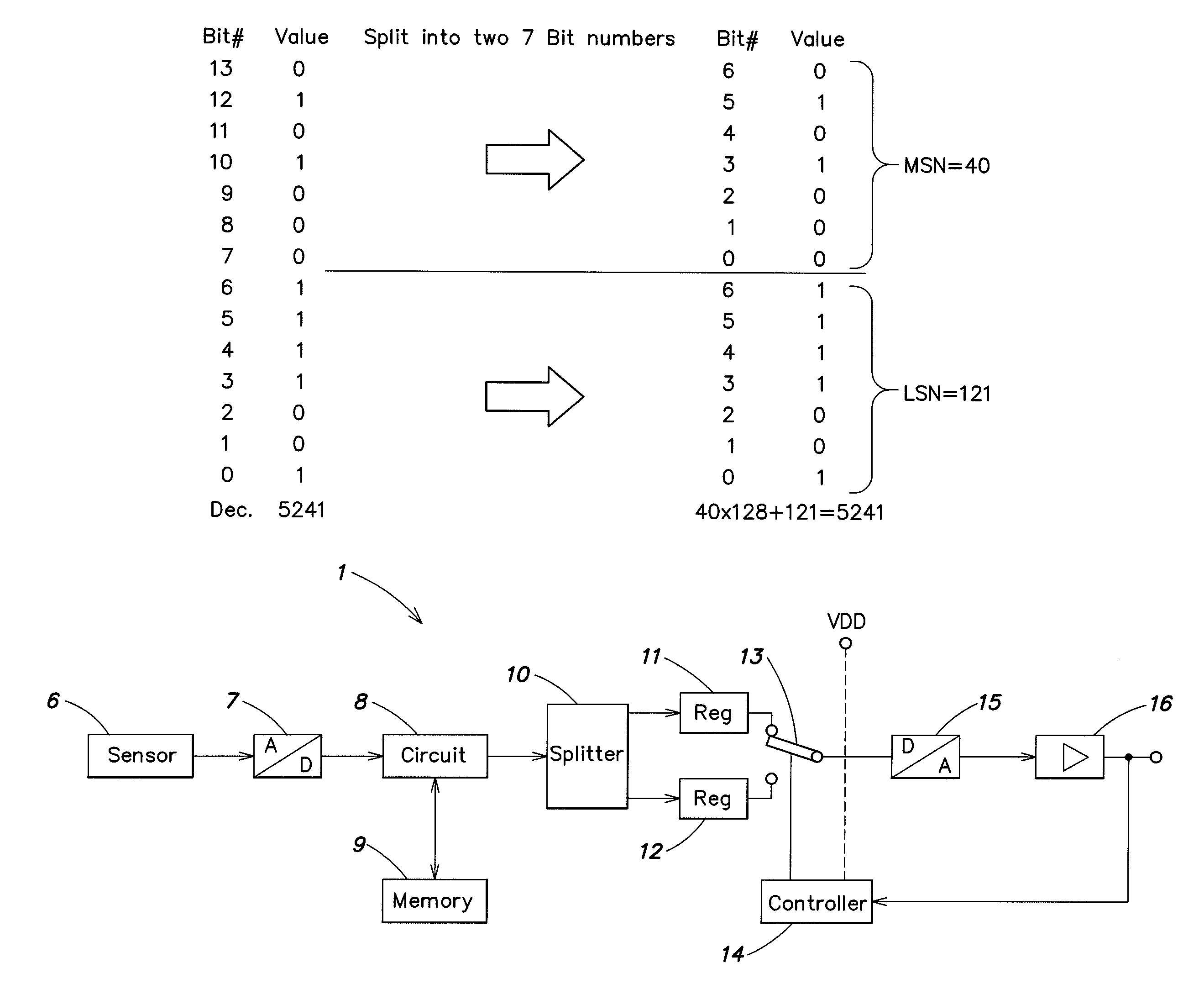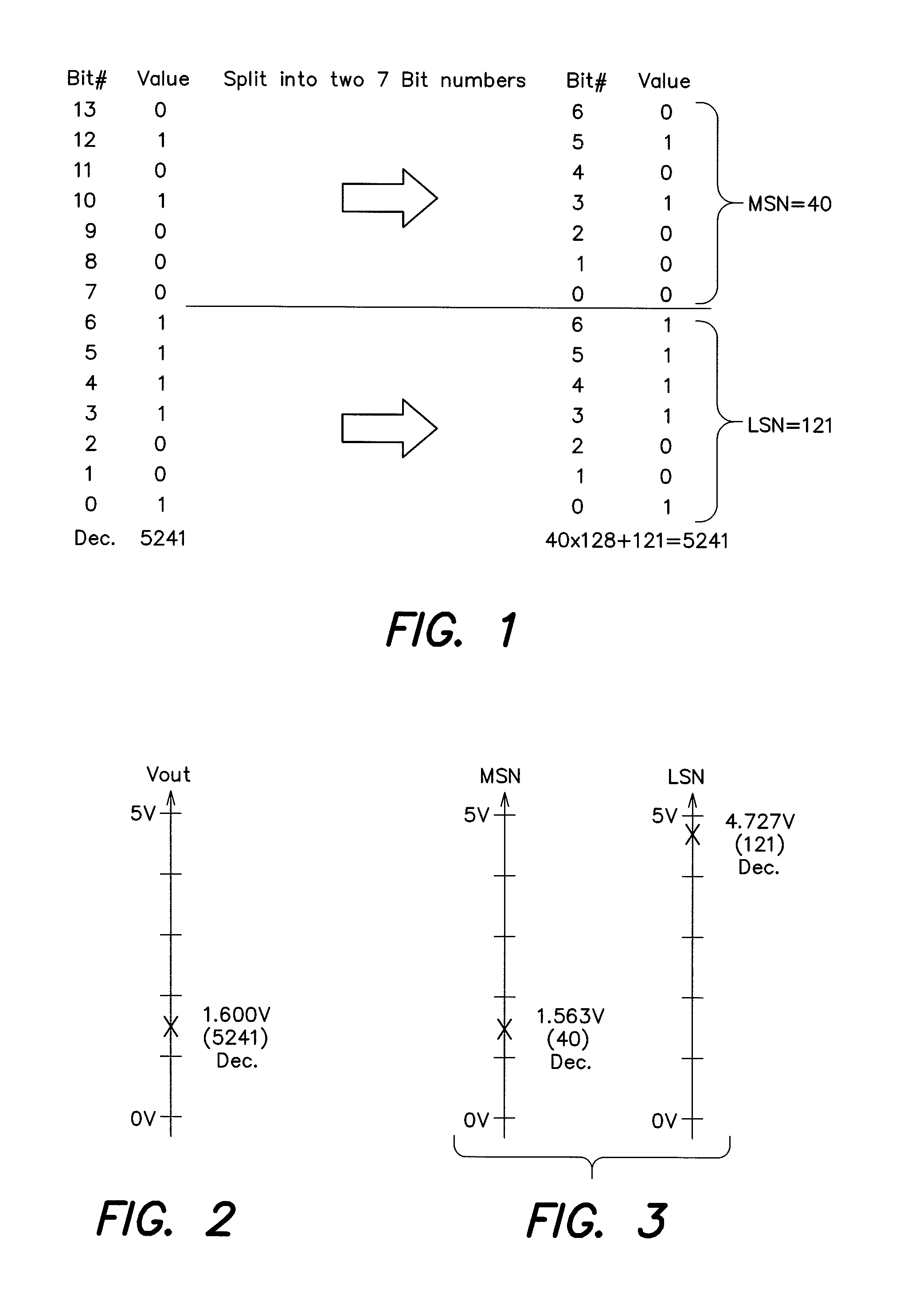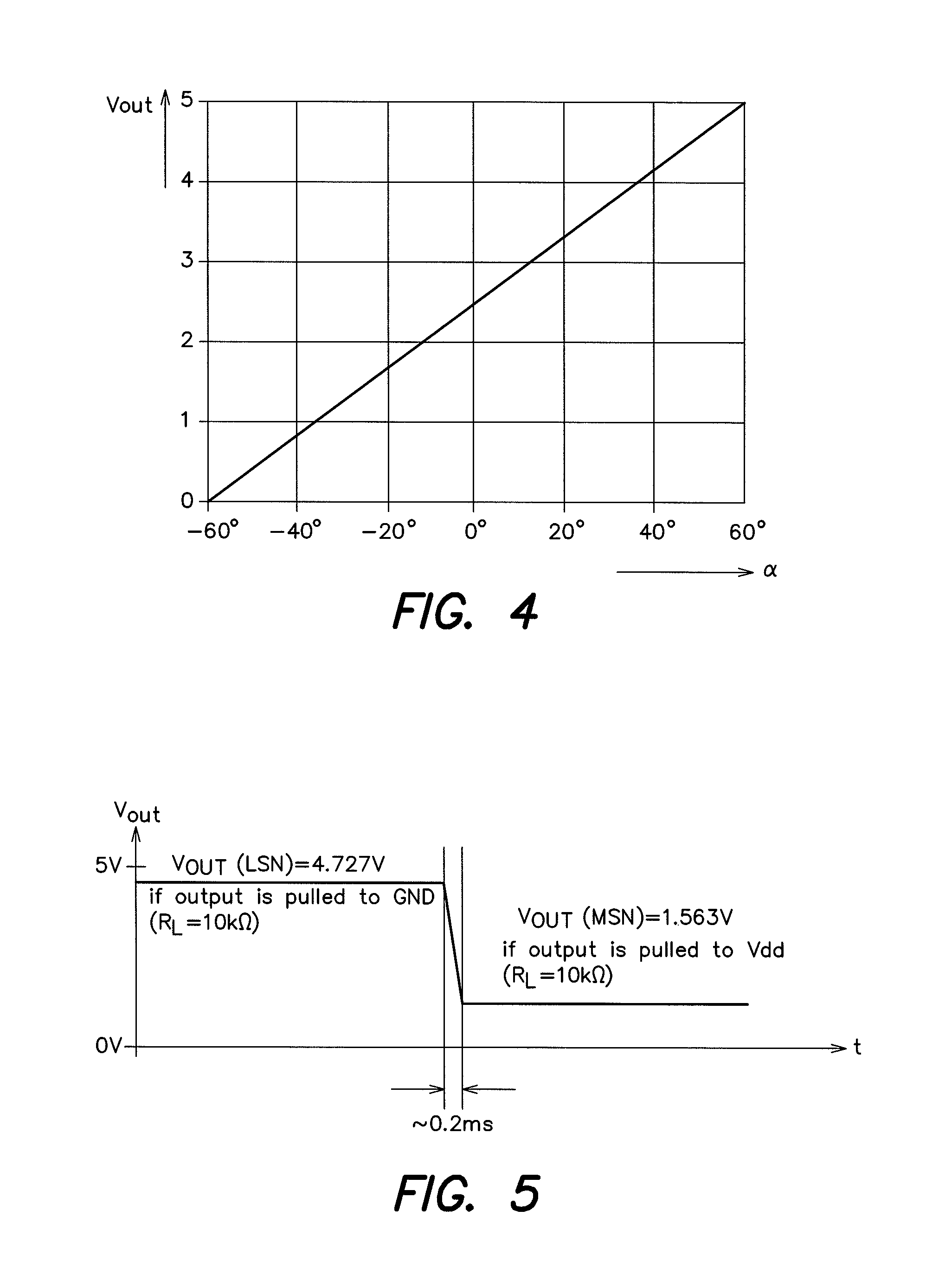Sensor with multiplex data output
a technology of multiplex data and sensors, applied in the field of sensors, can solve the problems of inability to transmit multiplex, high interference effect, etc., and achieve the effect of reducing controller loading and increasing transmission speed
- Summary
- Abstract
- Description
- Claims
- Application Information
AI Technical Summary
Benefits of technology
Problems solved by technology
Method used
Image
Examples
Embodiment Construction
[0024]FIG. 1 shows the output signal of a sensor with 14-place or 14-bit resolution in tabular form. The bit range (“Bit #”) running from bit 0 to 13, which defines a binary number, corresponds to 16,384 distinguishable signal ranges. In the example shown, the sensor signal value is assumed to be the decimal number 5241; the associated binary value is given under “value”. If this binary number is split into two 7-bit ranges, the new binary values MSN and LSN given in the right-hand “value” column are obtained. MSN stands for “most significant nibble” and LSN for “least significant nibble”. In decimal numbers, MSN corresponds to the value 40 and LSN to the value 121. In the following description and in the claims, these subranges MSN and LSN are also referred to as “short data words”. At the bottom right, a formula illustrates that the two short data words can be additively recombined into the original decimal value 5241 if the decimal MSB value 40 is first increased with respect to ...
PUM
 Login to View More
Login to View More Abstract
Description
Claims
Application Information
 Login to View More
Login to View More - R&D
- Intellectual Property
- Life Sciences
- Materials
- Tech Scout
- Unparalleled Data Quality
- Higher Quality Content
- 60% Fewer Hallucinations
Browse by: Latest US Patents, China's latest patents, Technical Efficacy Thesaurus, Application Domain, Technology Topic, Popular Technical Reports.
© 2025 PatSnap. All rights reserved.Legal|Privacy policy|Modern Slavery Act Transparency Statement|Sitemap|About US| Contact US: help@patsnap.com



